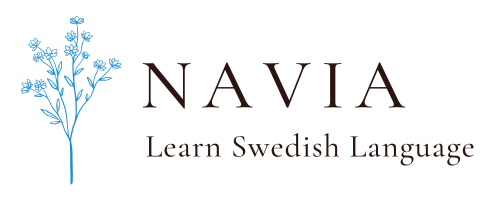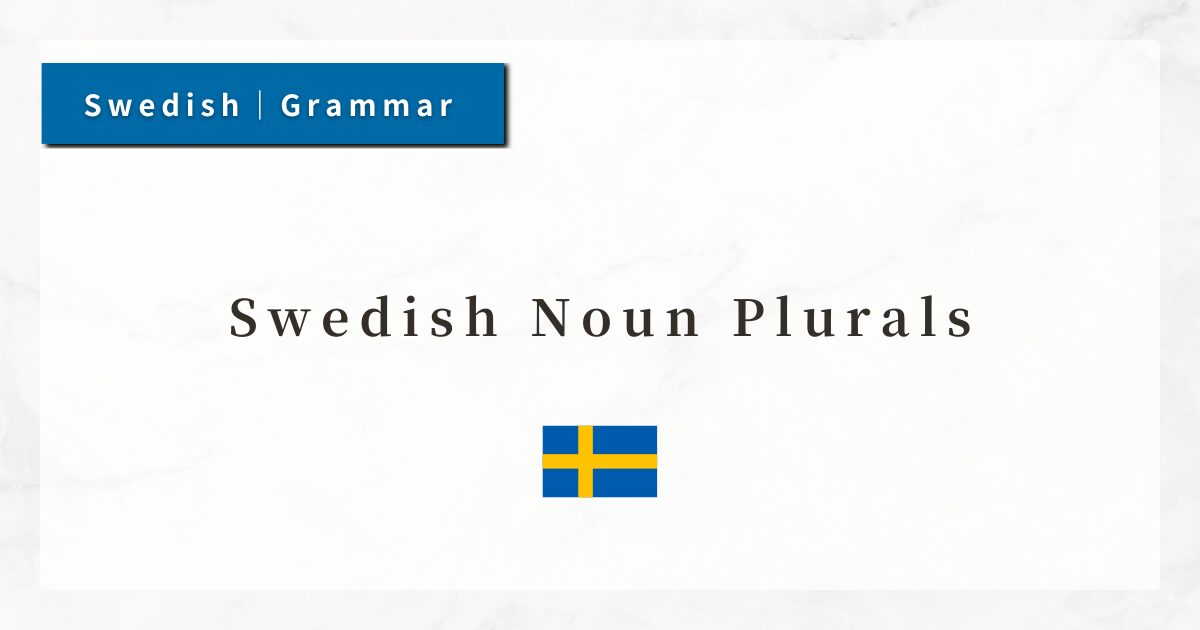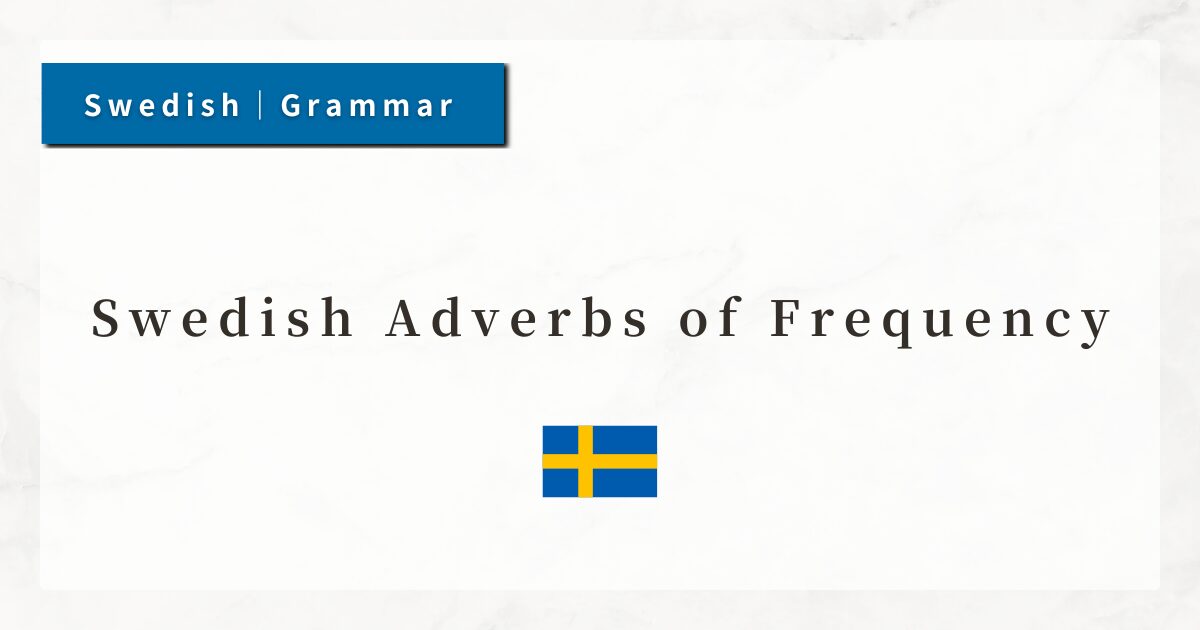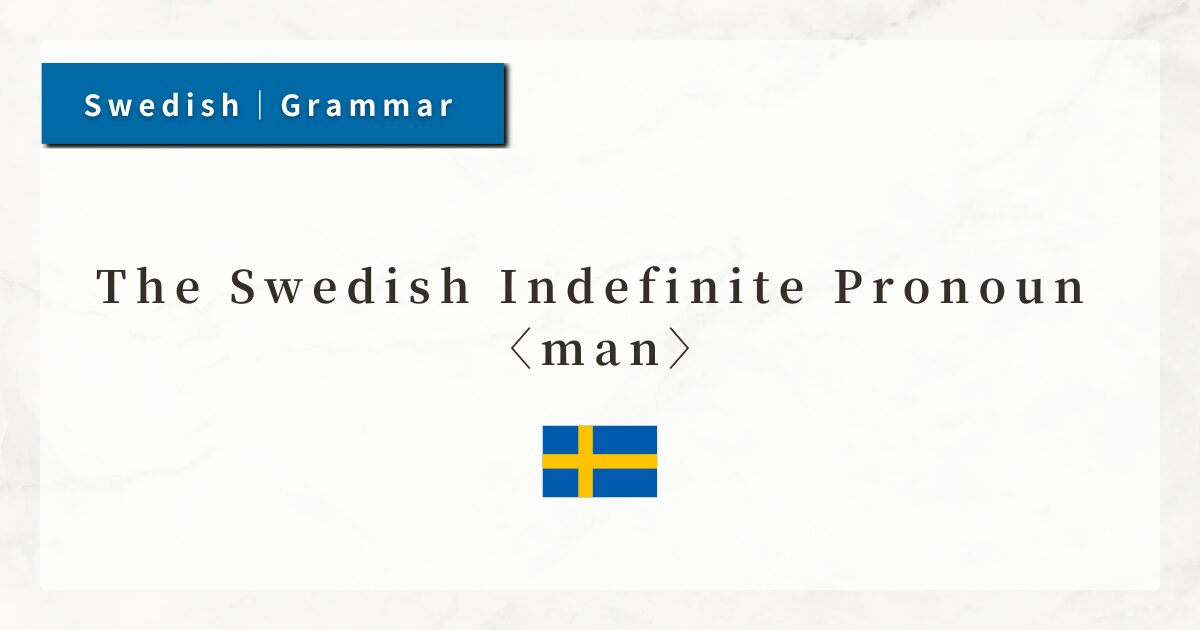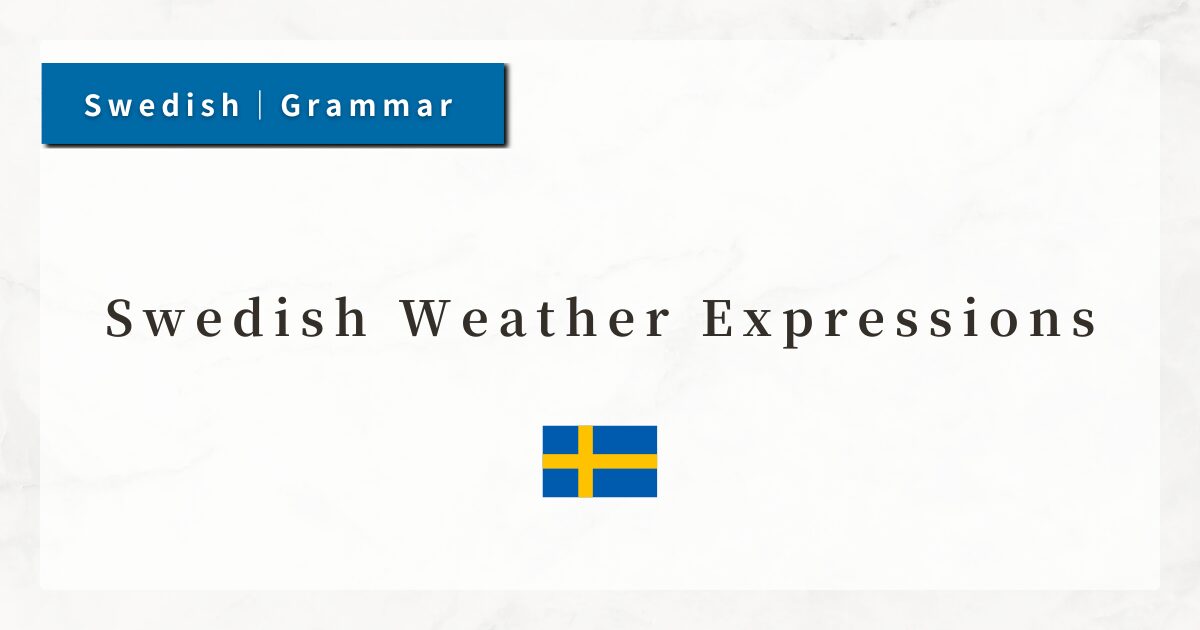#4 Swedish Noun Genders|Common vs. Neuter Nouns Explained
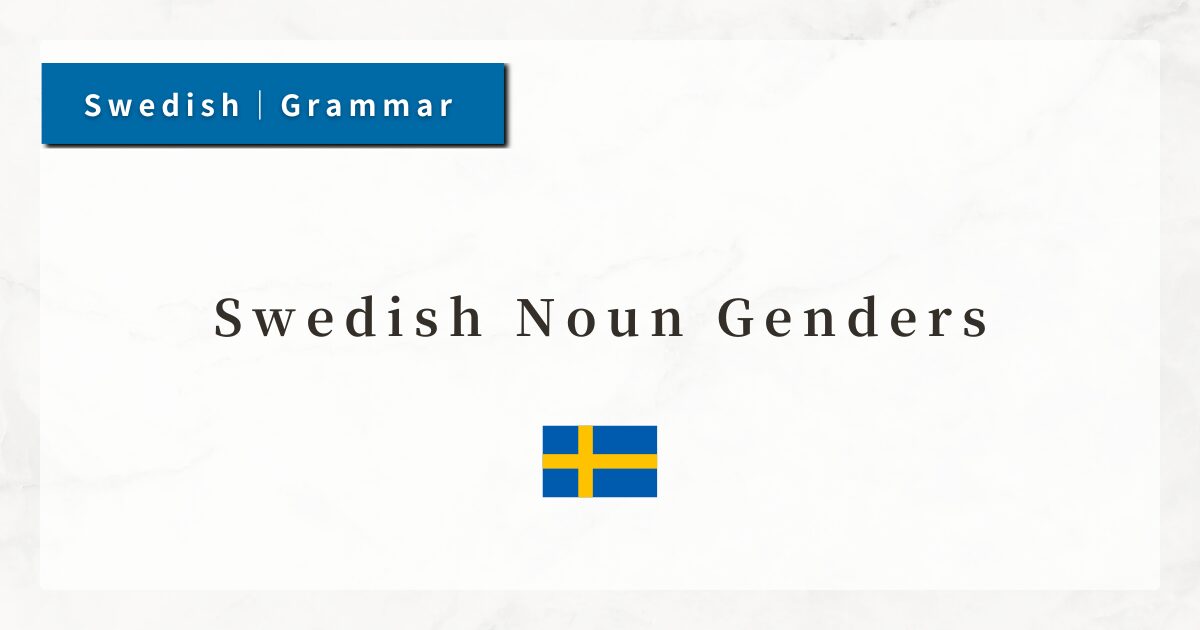
In Swedish, nouns have two grammatical genders: common gender and neuter gender. Since English nouns do not have grammatical gender, this concept can be a little confusing for those encountering Swedish for the first time.
However, noun gender is one of the key rules that determines the form of articles, adjectives, and pronouns.
In this lesson, I explain the basics of distinguishing between common and neuter nouns, along with tips for memorization, exceptions, and practical usage points.
1. What Is “Noun Gender” in Swedish?
Every Swedish noun is assigned a gender. This is a grammatical classification, not related to natural gender such as male or female.
In Swedish, nouns are broadly divided into two genders:
- Common gender: takes the indefinite article en
- Neuter gender: takes the indefinite article ett
This distinction affects many grammatical rules, such as the form of articles, adjective agreement, and how definite forms are constructed.
Therefore, when learning a noun, you must always learn its gender together with it.
2. Examples of Common and Neuter Nouns
Below are some examples of nouns with en (common) and ett (neuter):
| Common Gender (en) | Translation | Neuter Gender (ett) | Translation |
|---|---|---|---|
| en stol | chair | ett bord | table |
| en bil | car | ett fönster | window |
| en hund | dog | ett barn | child |
| en bok | book | ett hus | house |
| en flicka | girl | ett språk | language |
As shown above, many nouns referring to people or animals take en, but not all. For example, ett barn (“child”) is neuter.
Because gender in Swedish is not always predictable from meaning, the golden rule is to learn new words together with their article.
3. How to Remember Noun Gender
In some cases, the ending of a noun can give you a hint about its gender. However, there are many exceptions, so treat these patterns only as supporting clues.
Endings likely to indicate common gender
- -a: en flicka (girl), en penna (pen)
- -are (often for professions): en lärare (teacher), en kock (chef)
Endings likely to indicate neuter gender
- -um: ett museum (museum)
- -ande / -ende (nouns derived from verbs): ett meddelande (message)
4. Why Is It Important to Know Noun Gender?
Knowing the gender of a noun is essential because it affects the following grammar points (which I will explain in detail in future lessons):
4-1. Definite Articles (added to the end of the noun)
In Swedish, the definite article is attached to the end of the noun: -en for common gender, -et for neuter gender.
- en bok → boken (the book)
- ett hus → huset (the house)
Since the ending changes according to gender, knowing whether a noun takes en or ett directly determines the correct definite form.
4-2. Adjective Agreement
Adjectives also change according to the gender of the noun.
- stor (big) → en stor bok (common) / ett stort hus (neuter)
For common gender nouns, the base form of the adjective is used. For neuter gender nouns, -t is added to the base form.
5. Summary
- Swedish nouns are classified as common (en) or neuter (ett).
- Gender affects grammar points such as articles, adjective agreement, and definite forms, so it must be learned accurately.
- For most nouns, gender cannot be determined by meaning or ending, so always learn the noun together with its article.
